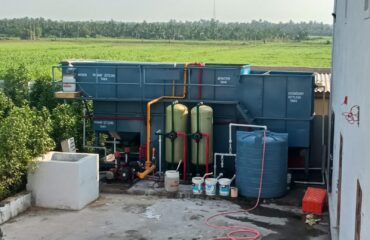Introduction
Nestled amidst the serene hills of Uttarakhand, Dehradun has emerged as a hub for various industries. However, the rapid industrialization comes with its own set of challenges, especially concerning environmental sustainability. The installation of an Effluent Treatment Plant (ETP) in Dehradun presents a promising solution to mitigate the environmental impact of industrial activities while fostering responsible growth.
Unveiling Effluent Treatment Plants (ETPs)
An Effluent Treatment Plant (ETP) serves as a vital cornerstone in the realm of industrial waste management. Its primary purpose is to treat and purify industrial wastewater before releasing it into the environment, ensuring that it complies with regulatory standards and does not harm the ecosystem.
The Significance of ETPs in Dehradun
1. Safeguarding Natural Resources
Dehradun’s captivating natural beauty is a precious asset that needs protection. ETPs play a pivotal role in this regard by treating the effluents produced by industries, preventing pollution of rivers and groundwater.
2. Promoting Public Health
The improper disposal of industrial wastewater can lead to severe health hazards for local communities. By ensuring the thorough treatment of effluents, ETPs safeguard public health and well-being.
3. Fulfilling Legal and Regulatory Obligations
In an era of stringent environmental regulations, industries need to uphold their responsibility towards the environment. ETPs facilitate compliance with these regulations, averting potential legal consequences and fostering sustainable practices.
4. Resource Conservation
Water scarcity is a global concern, and Dehradun is no exception. ETPs play a pivotal role in water conservation by treating and recycling water, reducing the burden on already limited freshwater resources.
5. Pioneering Sustainable Development
ETPs symbolize the synergy between industrial progress and ecological preservation. They encapsulate the spirit of sustainable development, which is essential for the long-term well-being of the region.
Inner Workings of ETPs
- Preliminary Treatment: Initial removal of large solids and debris through processes like screening and sedimentation.
- Primary Treatment: Physical and chemical processes to separate suspended solids and reduce biochemical oxygen demand (BOD).
- Secondary Treatment: Utilization of microorganisms in biological processes to break down organic matter, further reducing pollutants.
- Tertiary Treatment: Implementation of advanced techniques such as filtration and disinfection to achieve high-quality effluent.
- Discharge or Reuse: The treated water can be safely released into water bodies or repurposed for non-potable applications, significantly reducing freshwater demand.
Challenges and Considerations
- Diverse Effluent Composition: Different industries generate varied wastewater compositions, demanding tailor-made treatment strategies.
- Adoption of Cutting-Edge Technologies: Embracing the latest treatment technologies ensures efficient pollution control.
- Sustained Maintenance and Monitoring: Regular upkeep and continuous monitoring are essential for the sustained effectiveness of ETPs.
In Conclusion
The establishment of an Effluent Treatment Plant in Dehradun marks a decisive stride towards harmonizing industrial expansion with environmental preservation. By addressing the concerns surrounding wastewater pollution, ETPs contribute to a cleaner environment and a brighter future. These plants embody Dehradun’s commitment to responsible industrial growth, where economic prosperity is pursued in tandem with ecological well-being.





